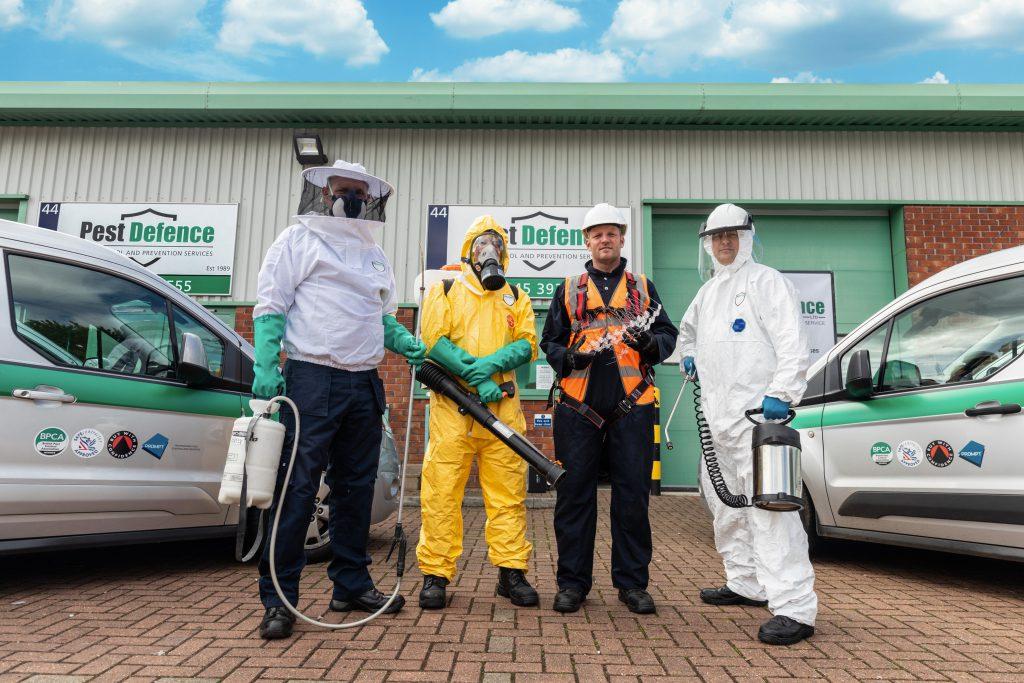Pest Control Methods Throughout the Ages
For as long as humans have been around, there have been pests to bother us. Whether it’s flies and other insects or rodents and larger creatures, pest control has been a necessity almost from the beginning.
While we don’t tend to be faced with all the same dangers as our ancestors – no sabre-tooth tigers, anyway – we have had to adapt the way we look at pest control as society and science has developed. Most pest control can be traced back to agricultural progress, but to give you an idea of just how far we’ve come, we thought we’d take a look back through different time periods for different pest control methods, why they were needed and how 21st-century pest control has become far more humane.

How the Sumerians did pest control
Sumeria was one of the most ancient civilisations on the planet and was located in Mesopotamia (roughly where Iraq is now), so this seems the perfect place to start. It’s with the Sumerians that we find one of the earliest records of pest control, largely due to their development of a society framed around agriculture. In an attempt to deter insects and mites, the Sumerians used sulphur and, unknowingly, gave birth to the first pesticide. It’s hardly surprising that, from a society that gave us so much, we also got the first attempt to control pests.
How the Ancient Egyptians did pest control
Without realising it, the Ancient Egyptians set something big in motion: cats as pets. To help protect crops and fend off pests, they used cats, which is why they feature so heavily in imagery and sculptures from this time. Now, cats can be found on almost every continent as the practice was taken up around the world and never really stopped; farms still use cats to help keep mice and rats at bay, but these days we mostly just keep them around for company. One casualty of this globally adopted pest control solution, however, has been the severe dent made in bird populations.

How the Ancient Chinese did pest control
Different techniques from Ancient China involved various different ways of fending off pests, from using ants as prey against other insects that were destroying crops to planting certain crops in different seasons to avoid pests. These strategic methods may not all have been used in the same time periods, but the Chinese certainly helped to continue what the Sumerians started, using chemicals to control and deter pests.
How the Ancient Greeks did pest control
There are several different mentions of pest control (though they may not have called it that) in Ancient Greece. One of the most prominent literary names in Ancient Greece, Homer, indicates in his writing that wood ash was spread across the ground as a deterrent for insects. In addition, it’s believed they used fire to chase away locusts, while their understanding of how insects and disease began to develop to inform practices, along with the Romans after them.

How the Victorians did pest control
For a good portion of time, pest control, along with hygiene and medicine, fell by the wayside due to a regression in education among the masses — it’s why we call it the ‘Dark Ages’. It was only with the Scientific Revolution that things began to pick up again, with the Victorians really stepping things up in the 1800s. Breeding plants to create more pest-resistant strains was one tactic, while more households became knowledgeable about which chemicals and elements could see off pests. Pesticides began to develop more towards the end of this period, with Paris green used to rid Parisian sewers of rats (it then turned the water green, hence the name).
How the 20th century did pest control
After World War II, the big new tool in the fight against pests was organophosphates. Mainly used as a nerve agent, making it a weapon, it was found to work well as a pesticide. However, the side effects on humans – loss of memory, confusion, dizziness – led to a large number of organophosphates being banned by the 21st century. Throughout the latter part of the 20th century, pest control began to change, integrating strategy and risk management into dealing with pests, providing more environmentally-friendly ways of working that were also more humane and less invasive for both homes and businesses.
Here at Pest Defence, we use only the most humane pest control practices where possible, working diligently to provide non-invasive solutions. We can also offer help and advice on the best way to prevent pests in the first place, as well as what you need to do – or not do – when faced with a protected species of animal nesting in your home.
Wherever you are in London and Essex – including Colchester, Chelmsford and Brentwood – you can count on our experienced and professional team. Contact us today to discuss any pest problem you have.


